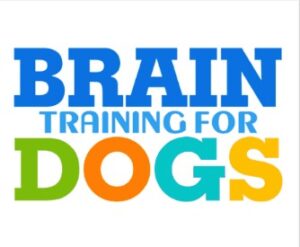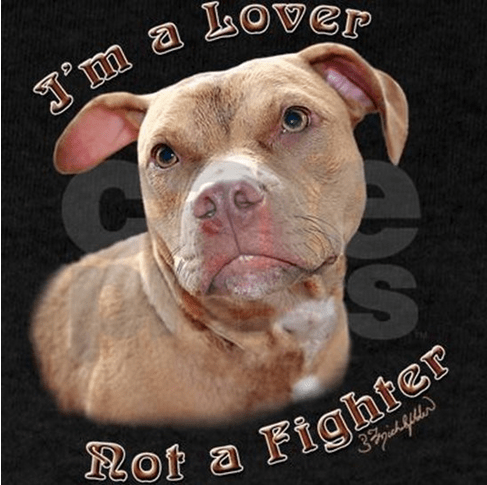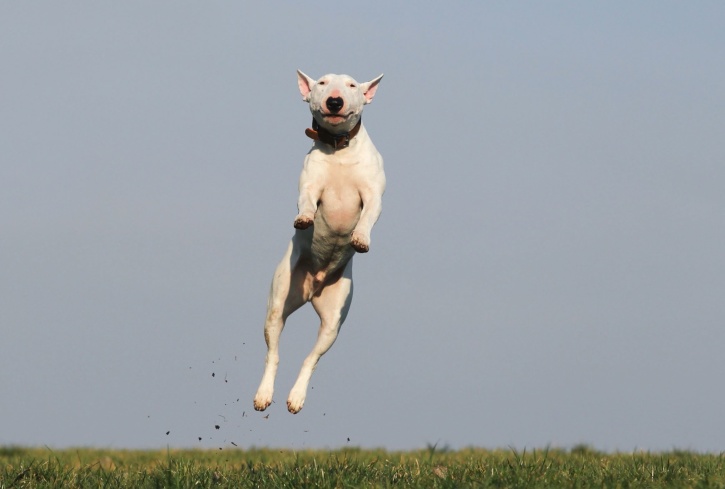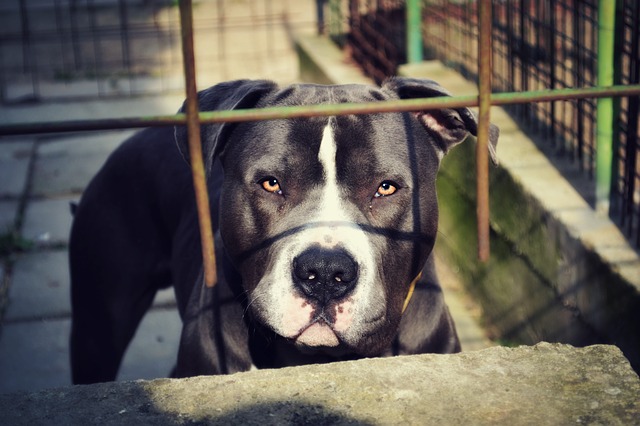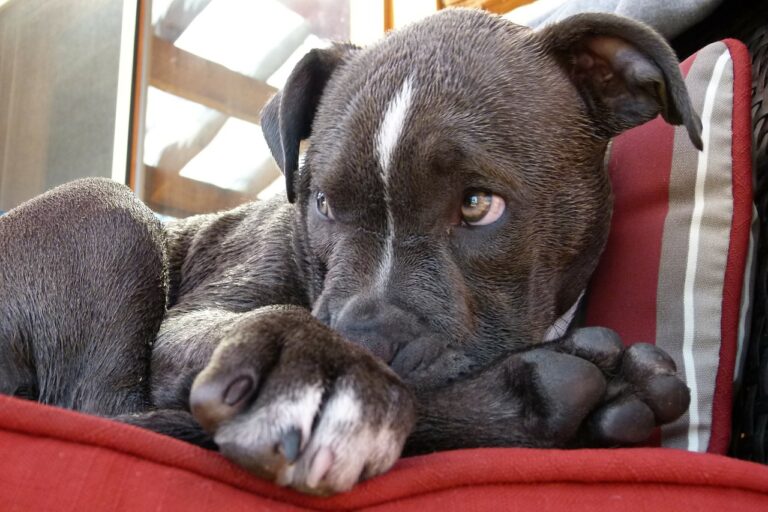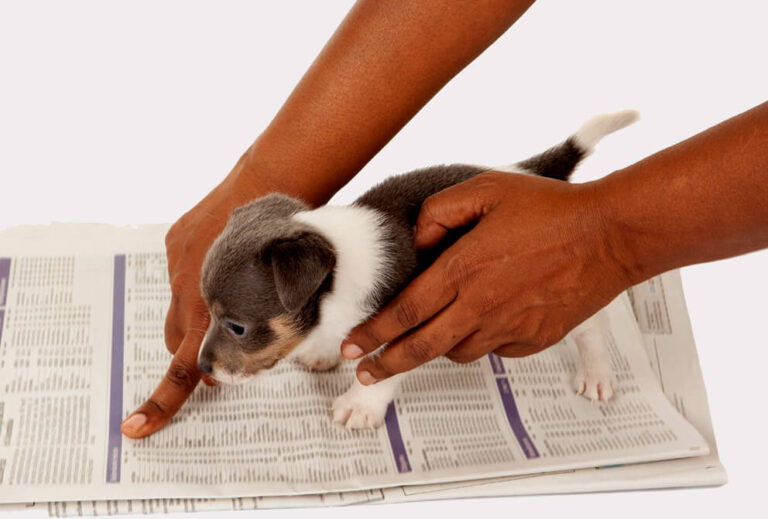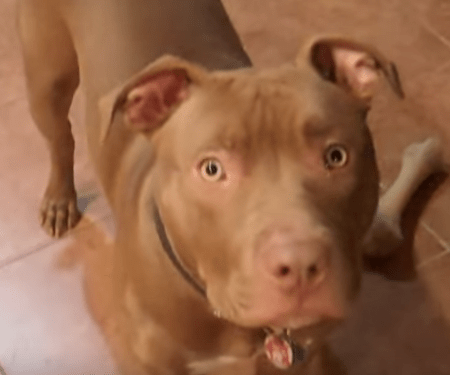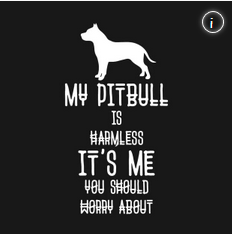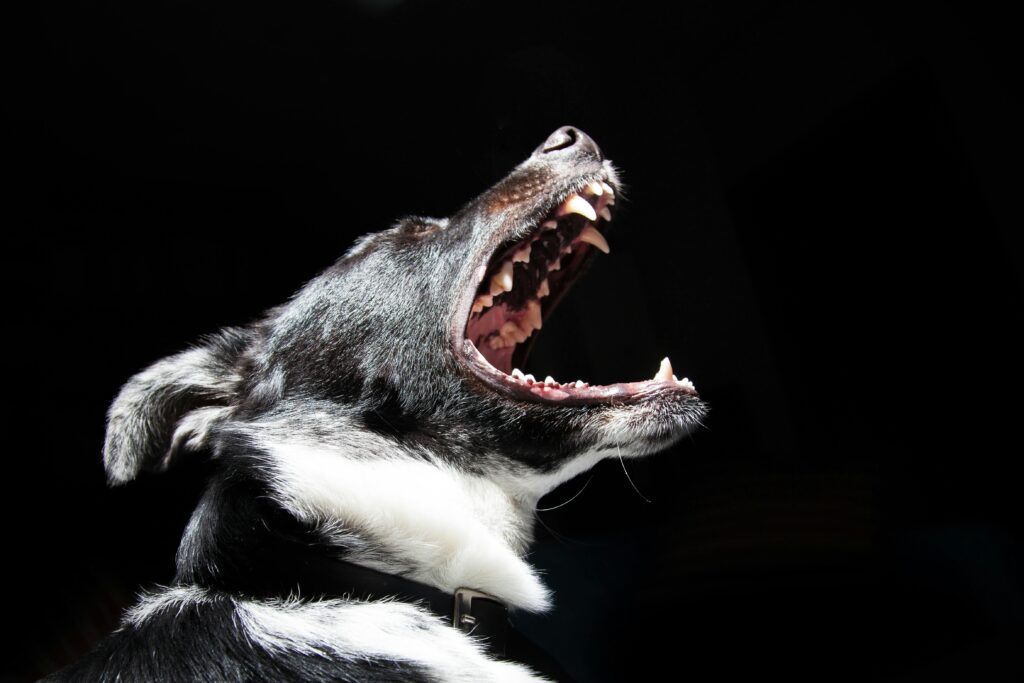
Aggression in pit bulls in most cases can be attributed to:
- lack of proper training
- purposely trained to be aggressive by irresponsible owners
- a history of abuse
If you feel your pit bull’s aggressive behavior is not due to one of the above causes, please consult your vet to rule out any underlying health conditions causing the aggression.
It can be behavior related to when the dog was a puppy and was never properly corrected. Regardless of cause, a dog’s aggression problem should be tackled as quickly as possible.
The outcomes associated with extended aggression could be hazardous or even deadly to other animals and people as well.
Why Are Dogs Aggressive?
Heritage
A dog’s genetics may play a role in their aggression. Dog heritage varies widely among breeds and some are more susceptible to aggression than others. While dog’s genes and heritage are possible related causes, it doesn’t make it true in all cases.
For example, many people think that a Pit Bull’s genetics are responsible for their aggression. Pit Bull genes are responsible for giving them strong jaws, muscular frames and a high tolerance for pain.
Breeders are using the genetics of the dog to make them into Bully Pit Bulls. A Pit Bull’s heritage is not solely responsible in developing aggressive behavior. With the proper training, Pit Bulls can be as calm and lovable as any other dog breed.
Dog Environment
Dogs with living conditions that are less than ideal play a major role in aggression. Owners who employ severe punishment tactics for obedience training or do not expose their dog to the proper socialization are surely raising a dog that will be more prone to aggression.
Furthermore, aggressive behavior may have a higher propensity in dogs that have yet to be spayed or neutered.
Instincts
As part of its innate behavior, a dog will try to establish himself in a dominant role until he asserts his position in the pack. Aggressive behavior such as biting will be how the dog will test other animals as well as people to assess their fear and insert themselves as the pack leader.
It’s the owner’s responsibility to realize that they are the pack leader and to let that be known to the dog through appropriate training, not through force.
How to Stop Aggression in Pit Bulls
To avoid aggressive behavior in dogs, place close attention especially after your dog is 14 months old. Swift action now to correct this problem will yield faster and greater results. Eliminating the possibilities of where the aggression is stemming from is the first step.
Aggressive behavior can begin in puppies under 2 months old. This is a critical time when a puppy should be around other dogs to get the vital training that prevents them from biting other people. The most natural way to teach your puppy not to bite is through socialization.
If it were to nip or bite another dog, that dog will let him know that it’s not acceptable. This important learning phase through socialization extends normally to 3 or 4 months of age. It is not uncommon for it to continue on for months after.
Allowing a puppy to remain with its litter to at least 8 weeks of age is extremely important. It’s necessary training that a puppy can never get elsewhere. In this delicate time, escalated levels of discipline or extremely discouraged.
Scolding, striking or any other aggressive discipline can greatly increase the chance of your puppy developing aggressive behavior as they grow more mature.
Appropriate socialization with other puppies, dogs and people at this moment is the best dog training your puppy can get and will minimize any potential aggression.
Be the Pack Leader
First and foremost, always maintain your leadership role. You may not realize, but you’re the lead dog. The dog must respect the owner as the pack leader which will eliminate aggression from the dog to try to take over the pack.
Reward Your Dog
Most people are unsure how to reward your dog. Any aggressive behavior cannot be rewarded. The dog must be brought back to a calm relaxed state and then reward that behavior.
Find a small and preferably natural treat like Greenie’s etc. Keep them on hand and give them to your dog when you get your desired result. Slowly walk back the treats when your dog shows improvement in his behavior.
Teach Dog Commands
Daily exercise and socialization can be a great bang for your buck. The dog will get the necessary exposure he needs which will tire some of that aggression out of him.
At the same time, your get to train your dog with different commands and through repetition, he will respond to them appropriately.
